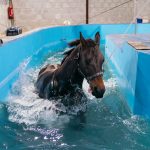As guardians of young children, you often face the challenge of ensuring your child remains active and engaged, while also ensuring their safety. In particular, navigating the creation of a safe play area for your child in a limited indoor space can be a complex task. However, with the right planning, materials, and a keen eye for safety, you can very well transform your limited indoor space into a bustling playground for your child. This article will guide you on how to make the most of your available space by creating a playroom that is safe, engaging, and conducive to your child’s learning.
Identifying the Ideal Space
The first step in creating a safe indoor playground is identifying the right space. While you may not have a massive area dedicated to play, a small corner or even a room that does double duty as a play area can work. The space you choose should be easy to supervise, free from safety hazards, and adaptable to the changing needs of your child.
Also read : How to Select and Arrange Furniture for a Small Patio to Maximize Space?
When considering a space, think about the child’s perspective. A room that may seem constrained to an adult could be a world of possibilities for a toddler. The key here is to optimize rather than maximize space, focusing on flexibility and adaptability.
Choosing Age-Appropriate Equipment
Once you have identified the playroom space, it’s time to consider the play equipment. Remember that not every toy or play equipment is suitable for every age. Therefore, choosing age-appropriate toys is crucial for your child’s safety and learning.
Also to discover : How to Choose the Right Type of Smart Thermostat for a Period Property with Inconsistent Heating?
For toddlers, opt for toys that support their current developmental stage. This will not only ensure safety but also contribute to their learning and skill improvement. Avoid toys with small parts that pose choking hazards or sharp-edged toys that could cause injury. Instead, choose larger, softer toys that can withstand a toddler’s rough handling.
Organizing Play Materials
In a limited space, organization is key. A well-organized playroom will ensure that the space is functional and safe. Designate specific areas for different types of play, such as a quiet corner for reading or a more open area for more physical play. This will help your child understand where they can find their toys and where they can play with them.
Moreover, keep the play materials within the child’s reach. This encourages independence and reduces the risk of accidents caused by children trying to reach toys placed at higher spots.
Incorporating Learning Elements
Even though play is often thought of as just fun and games, it is a vital part of your child’s learning process. When setting up your indoor playground, consider how each element contributes to your child’s cognitive, physical, and social development.
This could mean incorporating educational toys or games into the playroom, or it could involve designing the space in such a way that it invites exploration and imagination. Remember, every toy and every game can be a learning opportunity for a child if used in the right way.
Ensuring Safety in the Play Area
Safety is paramount when creating a play area for children, especially in limited indoor spaces where hazards may be overlooked. Safety in a play area does not only involve choosing safe toys but also ensuring the environment itself is safe.
Ensure that the area is free from sharp edges, heavy objects that could fall, or small items that could be swallowed. Cover electrical outlets and keep cords out of reach. The flooring should be safe for play – consider a soft carpet, foam tiles, or even a thick rug to cushion any falls.
Additionally, ensure that the space is free from substances that could be harmful if ingested, such as cleaning supplies. Also, keep the space clean and hygienic to reduce the risk of illness.
In conclusion, creating a safe, engaging, and educational indoor play area for toddlers in a limited space is not as daunting as it may seem. With careful planning, a focus on safety and learning, and a child-centered approach, you can effectively utilize any space for your child’s play and learning. Whether you have a dedicated playroom or a small corner in your living room, the important thing is that the space is safe, stimulating, and filled with love.
The Importance of Supervision and Engagement
The role of adults in a safe indoor playground is crucial. While the goal is to create a space that encourages independent play, adult supervision remains essential to ensure safety in the play area. As every child care professional knows, young children, particularly infants and toddlers, are curious explorers who may not discern potential dangers.
From time to time, you will need to do a safety audit of the play area, checking for any potential hazards that may have been overlooked. These risks could range from small toys that could be swallowed to large, heavy objects that could topple over.
But supervision is not just about safety, it also has to do with engagement. The best play experiences occur when adults play an active role, not as directors, but as co-players. Join your child in their play, let them lead the game while you provide support when necessary. This enhances the learning environment, promoting social interaction and language development.
In a small indoor space like a living room, creating an engaging playground might seem challenging. But remember, your presence and participation can transform any space into a vibrant playground. Your laughter, applause, and active engagement can bring life to the simplest of toys, making the indoor play area a haven for your child.
The Role of Soft Play in a Safe Indoor Playground
When selecting playground equipment for your indoor play area, it’s important to consider soft play options. In the context of indoor playgrounds, the term "soft play" refers to equipment and toys designed with a soft surface to minimize the risk of injury.
Soft play is particularly crucial in play areas for young children, where falls and bumps are common. Materials used in soft play are generally foam-based, providing a cushioned surface that can absorb shocks. Soft play could include mats, ball pits, soft blocks, or even stuffed toys.
When space is limited, soft play equipment offers additional advantages. They are typically lighter and easier to move around, allowing you to reconfigure the play area as needed. Also, soft play can be safely used in various areas of your home, including the living room, without risking damage to your furniture or flooring.
Moreover, soft play equipment can be designed to be developmentally appropriate, promoting various aspects of early childhood development. For instance, soft blocks can enhance motor skills, ball pits can promote social interaction, and shape sorters can improve cognitive skills.
Conclusion: Embracing the Challenge
Creating a safe indoor play area for young children with limited space might seem challenging, but with careful planning and creativity, it can certainly be achieved. The key is to remember that the ultimate goal is to create a safe, engaging, and enriching environment for your child to explore, learn, and grow.
Look at your space from your child’s perspective, see the opportunities rather than the constraints. Optimize the space you have by choosing age-appropriate play equipment, incorporating learning elements, and ensuring safety. Remember, your active supervision and engagement can turn any space into a vibrant playground.
But above all, make the play area a space filled with love and joy. For at the end of the day, no amount of toys or equipment can replace the warmth and comfort that a loving adult can provide. So embrace the challenge and enjoy the journey. Because in the world of child care, creating an indoor playground is not just about design and safety, it’s about fostering a bond with your child that will last a lifetime.











